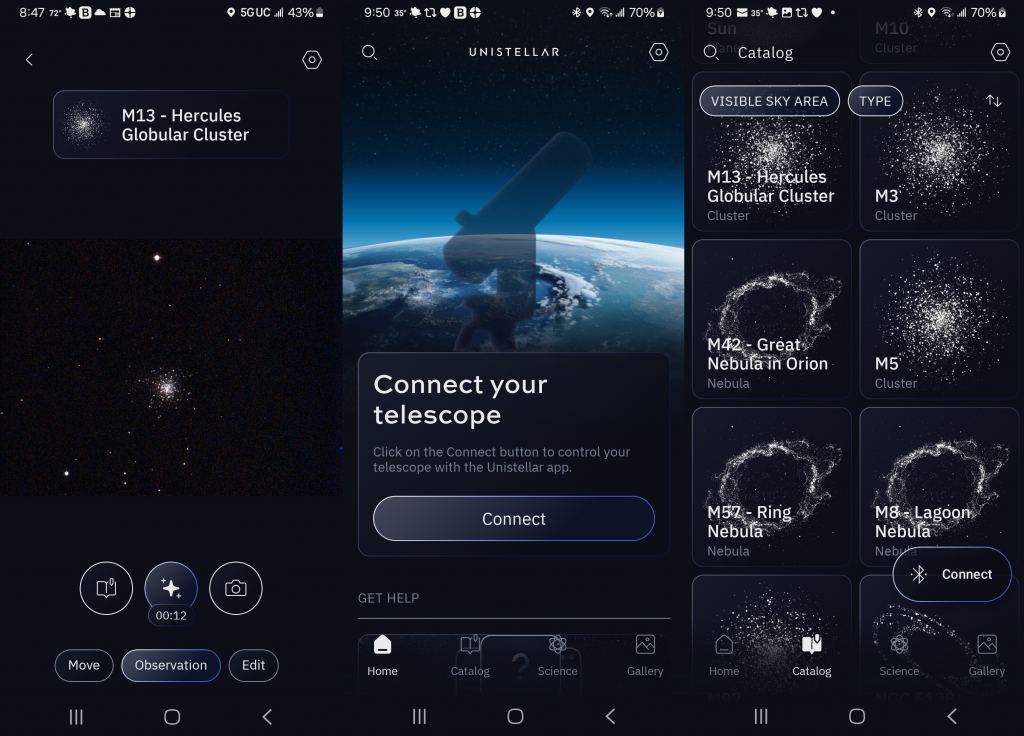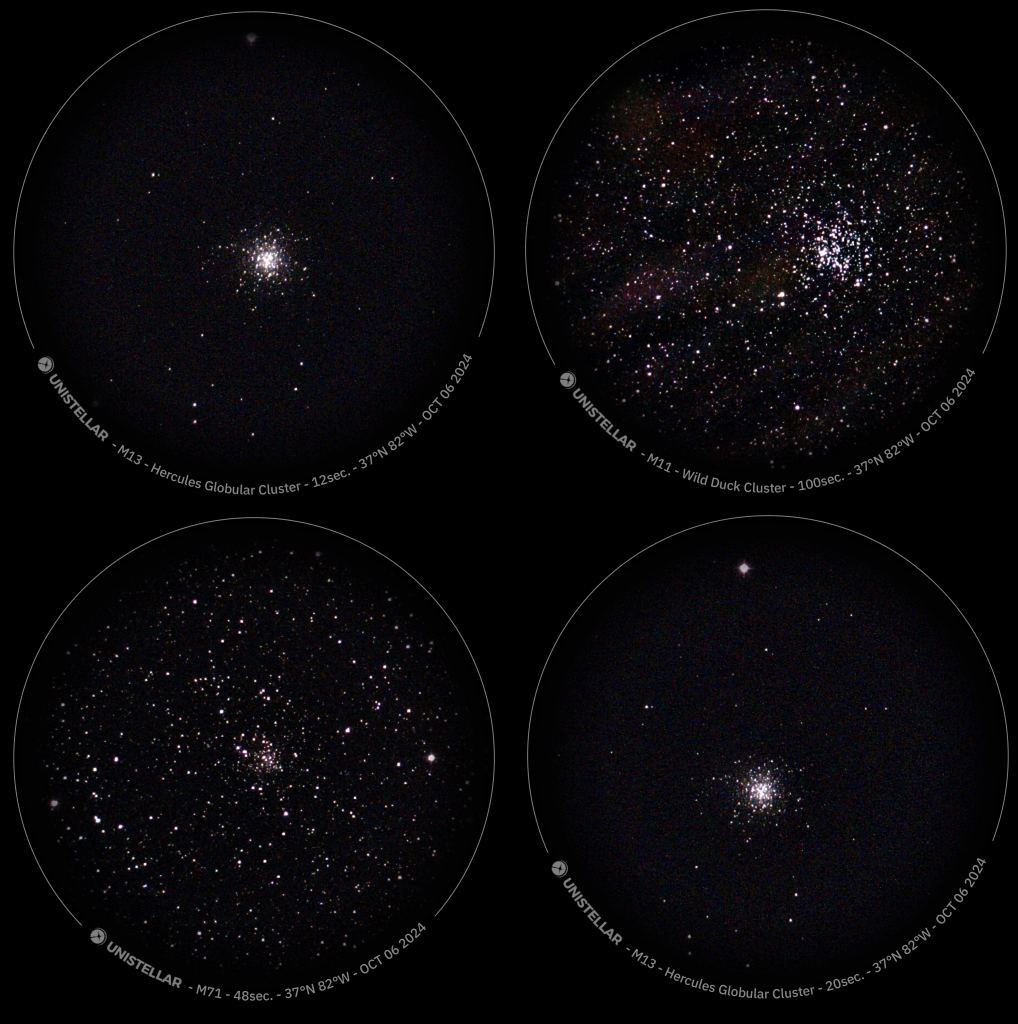Unistellar’s new Odyssey Pro telescope offers access to deep-sky astrophotography in a small portable package.
Access to the night sky has never been simpler. The last half decade has seen a revolution in backyard astronomy, as 'smartscopes'—telescopes controlled by smartphone applications—have come to the fore. These offer an easy entry into basic deep sky astrophotography even from bright urban skies, albeit at a higher price point versus traditional telescopes on the market. We've reviewed units from Vaonis and Unistellar before, as well as wrote commentary on the rise of the whole smartscope movement. Now, Unistellar has a new entry on the market in 2024: the Odyssey Pro.
The Odyssey Pro is lightweight, at 14.3-pounds (6.5 kilograms) assembled plus carbon fiber tripod. The telescope sets up quickly, with the tube and base securing to the top ring of the tripod.
Specifications for the Odyssey Pro
The telescope at the heart of the system is an 85mm aperture reflector with an f/3.9 320mm focal length. The image sensor (in place of where the secondary mirror would be on a traditional telescope) is a 4.2 megapixel camera. The turret on the side of the tube houses an electronic eyepiece incorporating Nikon's Eyepiece Technology, providing an enhanced view. The addition of the eyepiece turret is the key difference between the Odyssey and Odyssey Pro.
Smartscopes find and aim at targets using a method known as 'plate-solving' in tandem with satellite GPS. This involves looking at segments of the sky, and comparing the star pattern with a known database. You can see this in action as the scope slews from one part of the sky to the next on startup. Unlike, Vaonis's Stellina, Unistellar's telescopes give you a live view during the slewing process, and allow users to manually slew around the sky in a virtual joy stick mode, a nice, hands-on touch.
The new app interface for Unistellar is updated as well… I was surprised to actually find all of my old eVscope images in the cloud memory, from years back. The unit is USB-C charged, and offers about five hours of use in the field. The Odyssey Pro has 64Gb (gigabytes) of internal storage memory.
The company offers a free backpack with each purchase. The Odyssey Pro runs for $3,999 USD, and the company frequently offers discount sales.
Odyssey Pro Versus the eVScope
The Odyssey Pro is smaller (85mm aperture, versus 112mm) than the eVscope, but similar in operation. The Odyssey features auto focus technology: no more Bahtinov mask manual focusing like with the eVscope. We also got to try out the smart solar filter for the unit. The filter clicks magnetically in place of the front of the telescope. I'd keep a close eye on the unit when using it this way during public observing, as curious hands could easily snag or pull the filter off during observation. While there's no danger of blinding a viewer, a few seconds of unfiltered Sun could easily damage the telescope. The unit easily found and slewed to the Sun, then focused and color corrected the image.
What we like- Like the Unistellar eVScope, the Odyssey Pro just works as advertised: set it down, power it up, and you're slewing to targets within minutes.
What we don't like-The newer app seems a bit 'balky,' and I needed a cold boot the telescope during a few sessions to get things up and running again… also, it seems very sensitive to any vibration during enhanced imaging mode, even on solid concrete.
The telescope will wifi bond with the app in the field without a dedicated internet connection. This is a must for using it at a remote spot.
But the real magic happens when you engage the enhanced vision mode. This initiates a process where the scope starts to stare at a target, stacking and cleaning up the image. The longer it runs, the brighter and sharper the image gets. Unistellar's new method is known as ' Vivid Vision ' and compares and refines images versus the user database to validate what the telescope is seeing. Color correction for stars and validation also uses Gaia's latest DR3 catalog.
First Night Out
Our first night out with the Odyssey Pro saw us showing off about a dozen deep sky objects to a small group under the bright lights of downtown Bristol, Tennessee. Ironically, while you can view the Moon and planets with the Odyssey Pro, its relatively wide (33.6 x 45', a little larger than a Full Moon) field of view really shines when viewing deep-sky nebulae and clusters.
The Bottom Line
Are smartscopes worth the price? I'd say the Odyssey Pro (or any smartscope) has three key advantages:
-Finding objects: the whole plate-solving slewing method really puts me out of a job… and that's probably a good thing. Rather than spending time star-hopping and studying star charts to find an object, the Odyssey Pro simply goes there and centers the target in the field.
-Imaging from urban sites: The Odyssey Pro puts fainter objects in reach of urban viewers.
-Use for public outreach: At a star party, folks can gather around and watch as the view emerges. No more queuing up to the eyepiece, refocusing for every user, or explaining how to look through a telescope. I can spend more time talking about space and what we're seeing, rather than fussing with gear.
Also, Unistellar is alone in building an amazing science community around its worldwide network of smartscopes. Users are now tracking asteroids, following comets and even generating exoplanet light curves and more, all in real campaigns to contribute to science, all from their own backyards.
Be sure to give the Odyssey Pro a try, as a great introduction to smartscope astronomy.
 Universe Today
Universe Today




